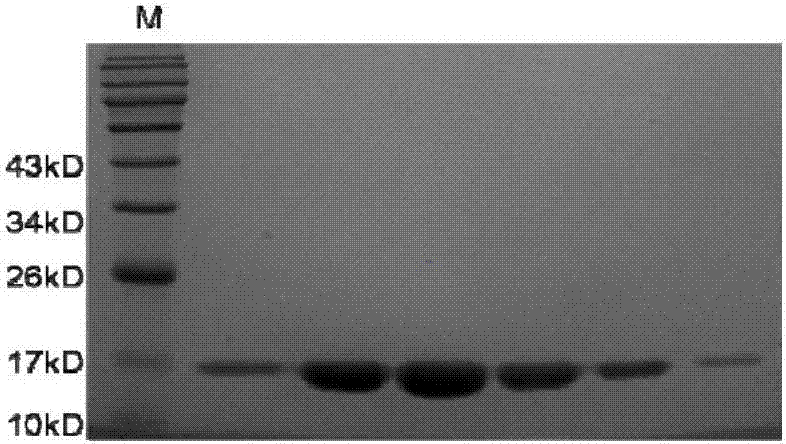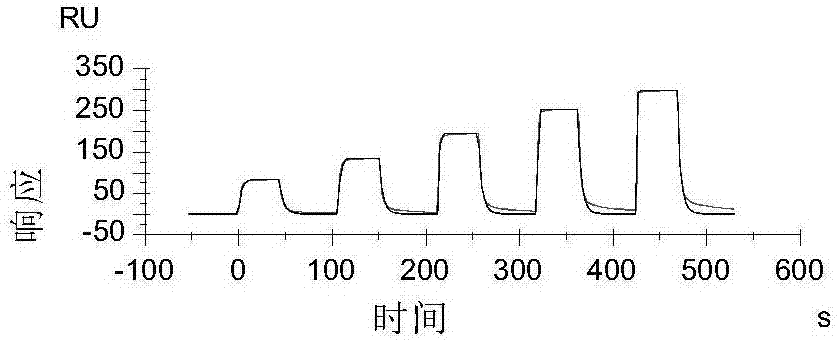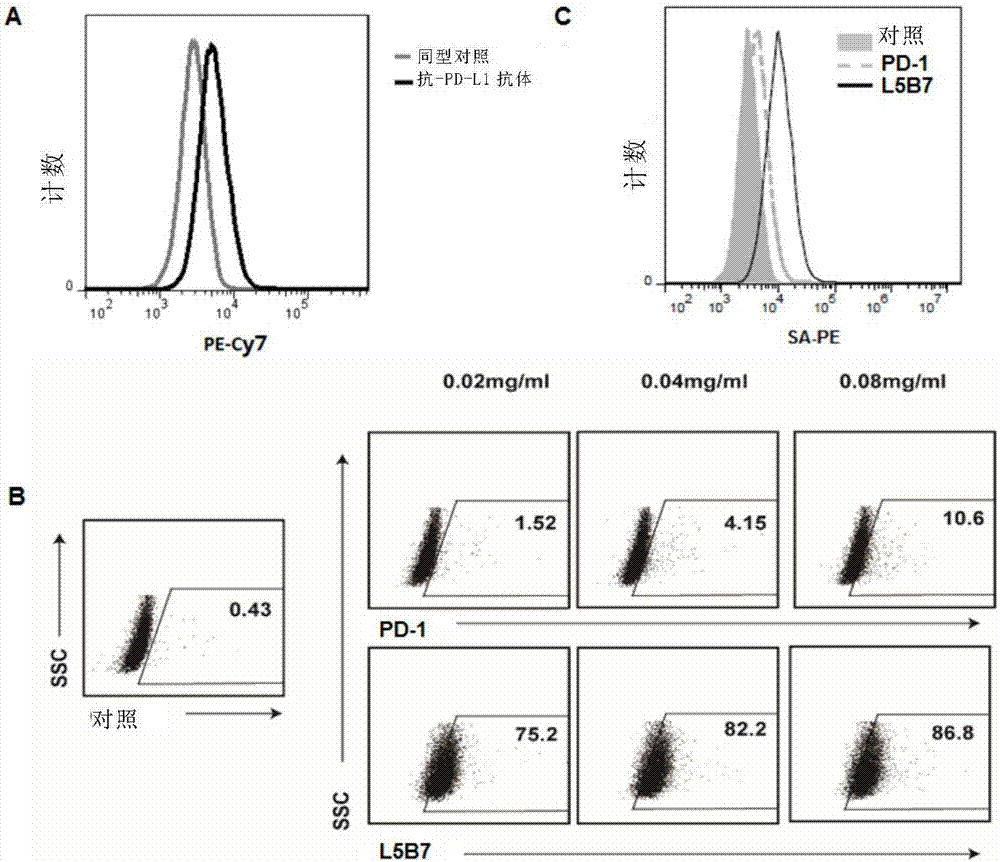Soluble PD-1 (programmed death-1) molecule with high affinity
A PD-1, PDL-1 technology, applied in the biological field, can solve the problems of tumor immune escape and weaken anti-tumor immune response
- Summary
- Abstract
- Description
- Claims
- Application Information
AI Technical Summary
Problems solved by technology
Method used
Image
Examples
Embodiment 1
[0141] Example 1 Expression, renaturation and purification of wild-type PD-1
[0142] The extracellular amino acid sequence and nucleotide sequence of wild-type PD-1 are SEQ ID NO.1 and 2, respectively, and the target gene carrying the extracellular sequence of wild-type PD-1 is double-digested with Nco I and Not I, and combined with The pET28a vector (Novagen) that has been digested with Nco Ⅰ and Not Ⅰ double enzymes (this vector has been optimized and has a biotin tag) is ligated. The ligation product was transformed into E.coli DH5α (Vazyme), coated with kanamycin-containing LB plate, cultured upside down at 37°C overnight, picked positive clones for PCR screening, sequenced the positive recombinants, and extracted after confirming the correct sequence The recombinant plasmid was transformed into E.coli Rosetta strain (TIANGEN) for expression.
[0143] Inoculate the above-mentioned Rosetta colony containing the recombinant plasmid pET28a-PD-1 in LB medium containing kanam...
Embodiment 2
[0145] Example 2 Combination Characterization
[0146] BIAcore analysis
[0147] The BIAcore T200 real-time analysis system was used to detect the binding activity of wild-type PD-1 molecules to PDL-1. Add the anti-streptavidin antibody (GenScript) to the coupling buffer (10mM sodium acetate buffer, pH 4.77), and then flow the antibody through the CM5 chip activated with EDC and NHS to immobilize the antibody on the chip surface , and finally the unreacted activated surface was blocked with ethanolamine hydrochloric acid solution to complete the coupling process, and the coupling level was about 15,000 RU.
[0148] Let a low concentration of streptavidin flow over the surface of the antibody-coated chip, then flow biotinylated PD-1 through the detection channel, and the other channel as a reference channel, and then add 0.05mM biotin in 10μL / min flow through the chip for 2 minutes to block the remaining binding sites of streptavidin. The affinity was determined by a single...
Embodiment 3
[0155] Example 3 Production of High Affinity PD-1 Molecules
[0156] Using the extracellular sequence of wild-type PD-1 described in Example 1 as a template strand, according to the phage display and screening method described in Li et al. (2005) NatureBiotech 23 (3): 349-354), high-affinity PD-1 1 screening. After several rounds of screening, the phage library had a strong binding signal to PD-1, and a single clone was picked from it for sequence analysis.
[0157] Express, refold and purify the high-affinity PD-1 molecule of the present invention according to the method described in Example 1, and determine its affinity with PDL-1 molecule according to the method described in Example 2. The affinity between the high-affinity PD-1 molecule obtained in the present invention and the PDL-1 molecule is at least 2 times that of the wild-type PD-1 molecule and the PDL-1 molecule, and its amino acid sequence and its affinity value with the PDL-1 molecule are as follows Table 1 sho...
PUM
 Login to View More
Login to View More Abstract
Description
Claims
Application Information
 Login to View More
Login to View More - R&D
- Intellectual Property
- Life Sciences
- Materials
- Tech Scout
- Unparalleled Data Quality
- Higher Quality Content
- 60% Fewer Hallucinations
Browse by: Latest US Patents, China's latest patents, Technical Efficacy Thesaurus, Application Domain, Technology Topic, Popular Technical Reports.
© 2025 PatSnap. All rights reserved.Legal|Privacy policy|Modern Slavery Act Transparency Statement|Sitemap|About US| Contact US: help@patsnap.com



